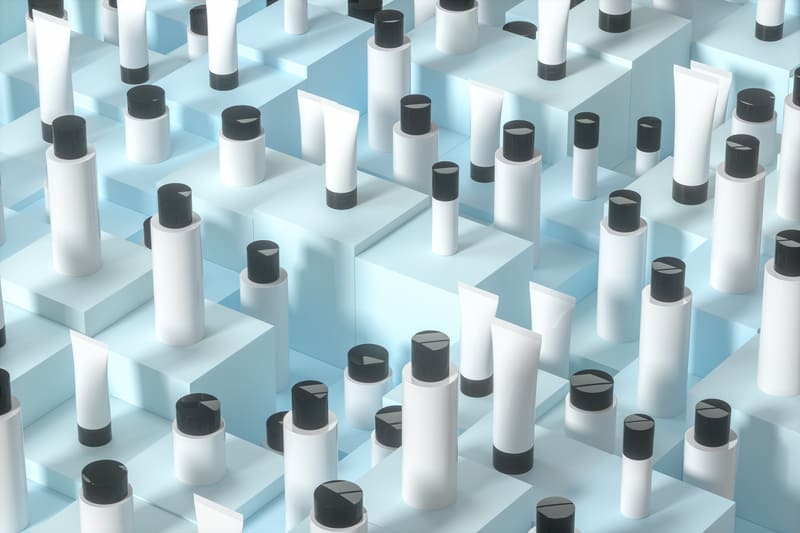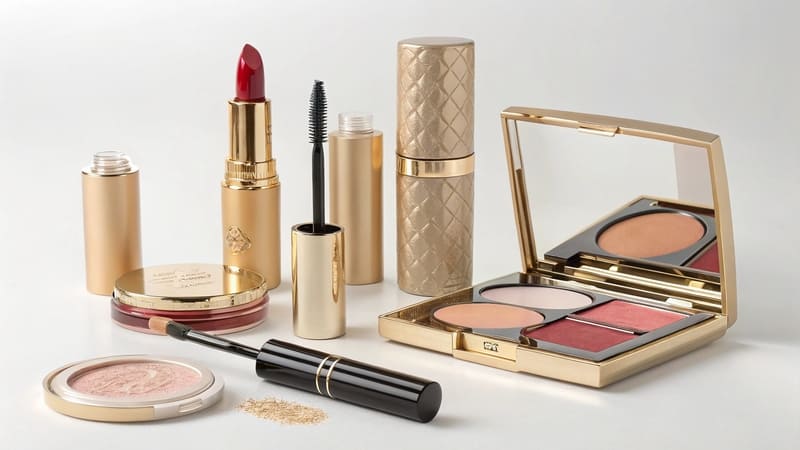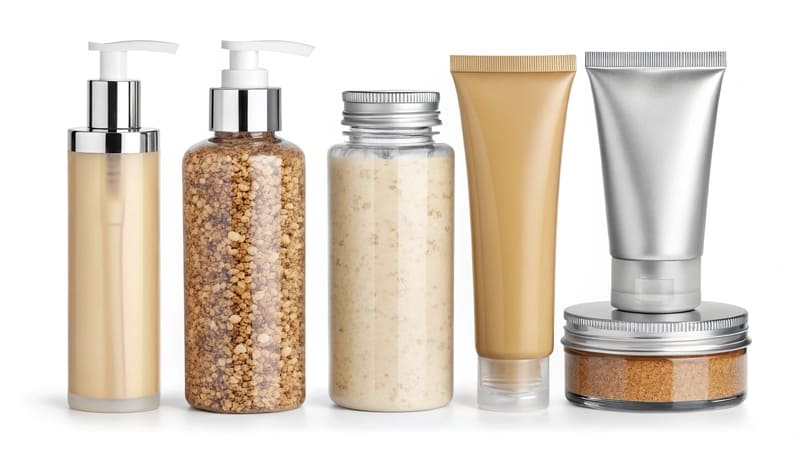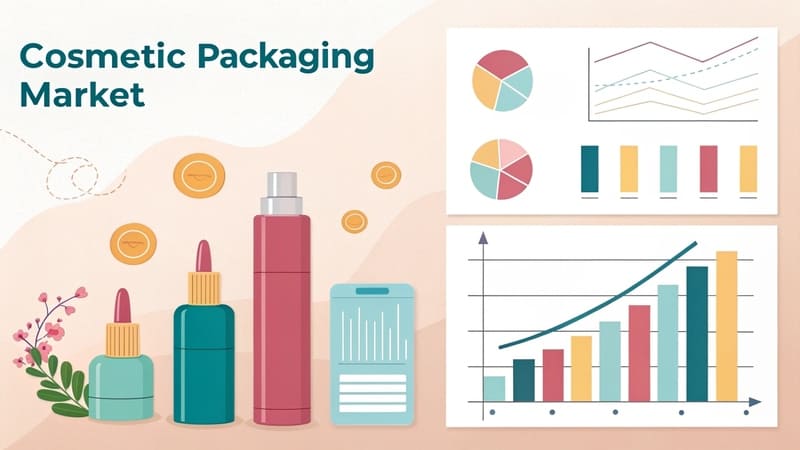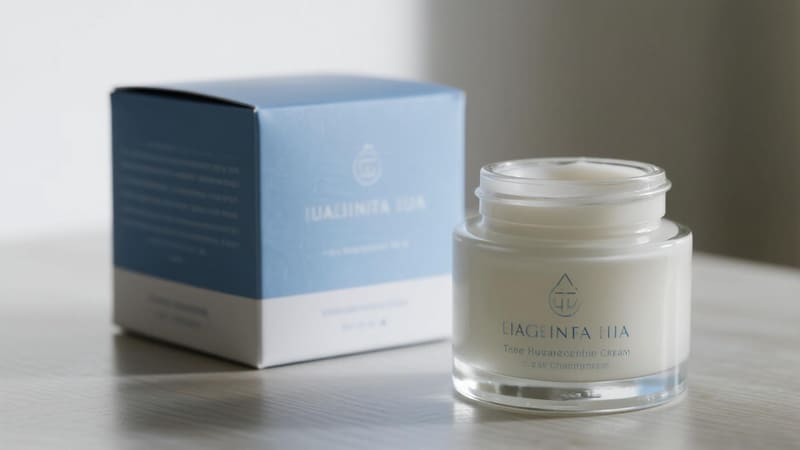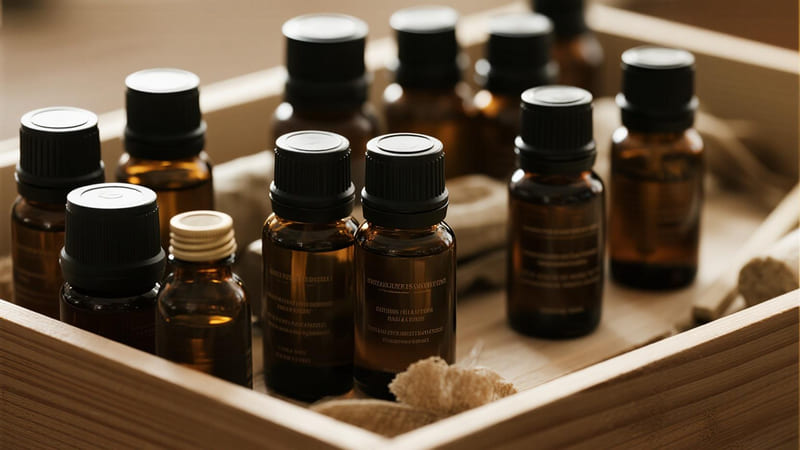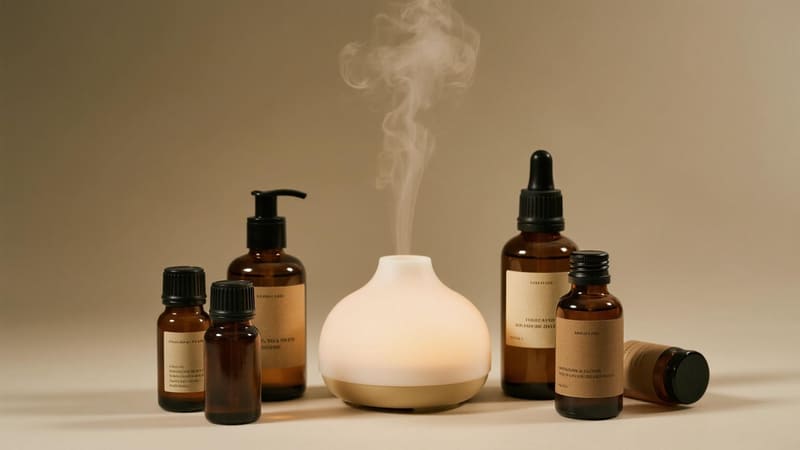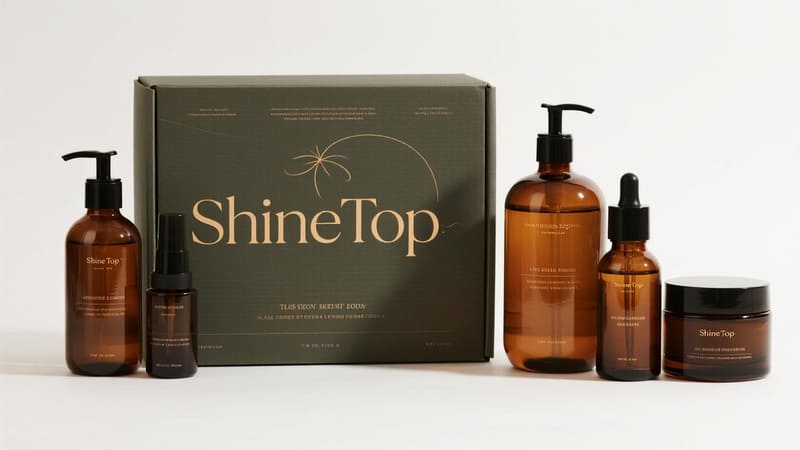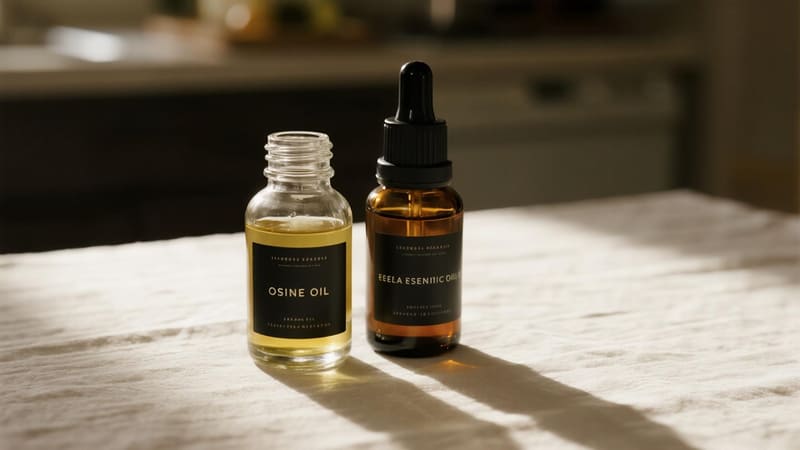Sourcing the right cosmetic containers can be a daunting task. You need options that are functional, attractive, and compatible with your product, but navigating suppliers can be complex.
Cosmetic containers can be found through specialized packaging manufacturers like us at ShineTop, wholesale distributors, online B2B platforms (e.g., Alibaba, DHGate), and sometimes even craft or hobby stores for very small quantities. The best source depends on your volume, customization needs, and budget.
Finding the perfect containers for your cosmetic line is a critical step in product development. The container is the first thing your customer interacts with, and it plays a huge role in their perception of your brand. With over 20 years in the packaging industry at ShineTop, I’ve helped countless brands find the ideal solutions. Let’s explore where you can source these essential components.
What is the Best Packaging for Cosmetics?
Choosing unsuitable packaging can lead to product spoilage, a poor user experience, or a brand image that doesn’t match your product’s quality. The "best" packaging is a strategic choice.
The best packaging for cosmetics is one that ensures product stability and safety, aligns with brand identity, offers user convenience, meets budget requirements, and is appropriate for the specific formulation (e.g., airless pumps for sensitive creams, glass for luxury oils).
There’s no single "best" type of packaging that fits all cosmetics. The ideal choice depends on a careful balance of several factors. It’s about finding the perfect match for your product, brand, and customer.
Key Factors Determining the "Best" Cosmetic Packaging:
-
Product Compatibility & Protection:
- The material must not react with the formulation.
- It needs to protect the product from light, air, moisture, and contamination, especially for sensitive ingredients or preservative-free formulas. Airless pumps, opaque materials, or UV-coated glass are examples.
-
Brand Identity & Aesthetics:
- The packaging should visually represent your brand’s values (e.g., luxury, natural, clinical, playful).
- Material, shape, color, and finish contribute to the perceived quality and appeal. Glass often signals luxury, while PCR plastic might highlight sustainability.
-
Functionality & User Experience:
- It should be easy for the consumer to open, dispense the product from, and reseal (if applicable).
- Consider the product’s viscosity and how it will be applied (e.g., a pump for lotions, a dropper for serums, a wide-mouth jar for thick creams).
-
Regulatory Compliance:
- Packaging must allow for all legally required labeling information (ingredients, net weight, warnings).
- Some products may require child-resistant closures.
-
Sustainability:
- Increasingly important for consumers. Options include recyclable materials (glass, PET, PP), post-consumer recycled (PCR) content, refillable systems, or biodegradable materials.
-
Cost & Scalability:
- The packaging cost must fit within your overall product budget.
- The supplier should be able to meet your volume needs as your brand grows.
Here’s a look at common container types and their suitability:
| Container Type | Best For | Considerations |
|---|---|---|
| Jars (Glass/Plastic) | Creams, balms, scrubs, masks, powders | Wide opening, potential for finger contamination |
| Bottles (Glass/Plastic) | Lotions, serums, cleansers, toners, oils | Various dispensers (pumps, sprays, droppers, caps) |
| Tubes (Plastic/Laminate) | Gels, creams, cleansers, lip gloss | Good for controlled dispensing, minimizes air exposure |
| Airless Pumps | Sensitive formulas, serums, foundations | Protects from oxidation, hygienic, precise dosage |
| Compacts | Pressed powders, eyeshadows, blushes | Often includes mirror and applicator |
| Dropper Bottles | Serums, essential oils, concentrated treatments | Precise dosage, good for liquids |
Anna, a cosmetics manufacturer in Thailand, carefully selects packaging that reflects her brand’s natural ethos while ensuring her formulations remain stable. For her serums, she often opts for our amber glass dropper bottles to protect the active ingredients.
What is Makeup Packaging Called?
Using incorrect terminology can make it difficult to communicate your needs to suppliers. Knowing the right terms helps you source packaging more effectively and efficiently.
Makeup packaging is generally referred to by its specific component type, such as "compacts" (for powders), "lipstick tubes," "mascara wands/bottles," "eyeliner pencils/pots," "lip gloss tubes/applicators," or "foundation bottles/pumps." Collectively, it’s part of "cosmetic packaging."
While "makeup packaging" is a broad term, the industry typically uses more specific names for individual components. This precision is important when discussing requirements with manufacturers like ShineTop.
Common Makeup Packaging Terminology:
-
Primary Packaging: The container that directly holds the makeup product.
- Lipstick Case/Tube: The mechanism that holds and allows twisting up of the lipstick bullet.
- Lip Gloss Vial/Tube & Wand/Applicator: A tube with a doe-foot or brush applicator.
- Mascara Bottle & Wand/Brush: The container for mascara with its application brush.
- Eyeliner Pencil/Pen: A pencil form or a liquid liner pen.
- Eyeliner Pot/Jar: Small jar for gel or cream eyeliners.
- Eyeshadow Pan/Pot: Metal pan holding pressed eyeshadow, often placed in a palette.
- Compact: A hinged case, often with a mirror, for pressed powders, blush, bronzer, or eyeshadows. May include a "godet" (the metal pan holding the product).
- Foundation Bottle/Tube/Jar: Can be glass or plastic, often with a pump, dropper, or simple cap.
- Concealer Tube/Wand: Similar to lip gloss tubes or small squeeze tubes.
-
Secondary Packaging: The outer packaging that houses the primary pack, typically a paperboard box.
- Folding Carton: A common type of box used for most makeup items.
-
Tertiary Packaging: Bulk packaging used for shipping (e.g., master cartons).
Here’s a breakdown for clarity:
| Makeup Product | Common Primary Packaging Term(s) |
|---|---|
| Lipstick | Lipstick Case, Lipstick Tube, Bullet |
| Lip Gloss | Lip Gloss Vial/Tube, Wand, Doe-Foot Applicator |
| Mascara | Mascara Bottle/Tube, Wand, Brush |
| Eyeshadow (Pressed) | Eyeshadow Pan, Godet (within a Compact/Palette) |
| Foundation (Liquid) | Foundation Bottle (with Pump/Dropper), Tube |
| Powder (Pressed) | Compact, Powder Pan/Godet |
When Mohammed, my client from Iraq, sources packaging for custom makeup sets, he needs to be very specific about each component – for example, "a black matte finish lipstick tube with a gold band" or "a 4-pan eyeshadow palette compact with a mirror." This level of detail ensures we provide exactly what he needs.
What is the Packaging Material for Cosmetics?
The material choice for cosmetic packaging is vast and impacts everything from product stability to brand perception and environmental footprint. Selecting inappropriate materials can compromise your product or brand.
Common packaging materials for cosmetics include various types of plastics (PET, PP, PE, SAN, PMMA/Acrylic), glass, aluminum, and paper/paperboard. The choice depends on product compatibility, desired aesthetics, cost, and sustainability goals.
The materials used in cosmetic packaging are chosen for their specific properties and how well they suit the product and brand. Each material has its pros and cons.
Overview of Common Cosmetic Packaging Materials:
-
Plastics: Widely used due to versatility, light weight, and cost-effectiveness.
- PET/PETE (Polyethylene Terephthalate): Clear, strong, good barrier properties. Common for bottles (beverages, lotions). Recyclable.
- PP (Polypropylene): Good chemical resistance, higher heat tolerance. Used for jars, caps, airless bottles. Recyclable.
- PE (Polyethylene – HDPE/LDPE): HDPE is rigid (bottles for shampoo), LDPE is flexible (squeeze tubes). Recyclable.
- PS (Polystyrene): Can be rigid and clear (compacts, sample pots) but more brittle. Less commonly recycled.
- SAN (Styrene Acrylonitrile) / AS (Acrylonitrile Styrene): Good clarity and stiffness, often used for clear jars or outer layers of double-walled jars.
- PMMA (Polymethyl Methacrylate) / Acrylic: High transparency, glass-like appearance, premium feel. Used for luxury jars and bottles. More expensive, harder to recycle.
-
Glass:
- Properties: Excellent barrier properties, inert (doesn’t react with products), premium feel, infinitely recyclable.
- Uses: Luxury creams, serums, foundations, fragrances, nail polish.
- Considerations: Heavier than plastic, breakable, higher energy to produce and transport.
-
Metal:
- Aluminum: Lightweight, good barrier, recyclable. Used for tubes (ointments, creams), aerosol cans, decorative components, bottle caps.
- Tinplate (Steel): Used for tins (balms, solid perfumes).
-
Paper & Paperboard:
- Properties: Recyclable, biodegradable (if uncoated), printable.
- Uses: Primarily for secondary packaging (boxes, cartons). Can be used for primary packaging for dry products (powder shakers, paperboard tubes for balms if lined).
- Variations: Kraft paper, coated paper, corrugated cardboard.
Here’s a quick material comparison:
| Material | Pros | Cons | Common Cosmetic Uses |
|---|---|---|---|
| Plastic | Versatile, lightweight, cost-effective, durable | Environmental concerns, variable recyclability | Bottles, Jars, Tubes, Caps, Compacts |
| Glass | Premium feel, inert, excellent barrier, recyclable | Heavy, breakable, higher cost | Luxury Jars/Bottles, Fragrance, Serums |
| Aluminum | Lightweight, good barrier, recyclable | Can dent, potential for interaction if unlined | Tubes, Aerosols, Caps, Decorative parts |
| Paper | Eco-friendly (if sourced well), printable | Not suitable for liquids unless lined, less durable | Secondary boxes, some dry product tubes |
At ShineTop, we offer a wide range of these materials and help clients like Anna choose the best fit. For her natural skincare line, she often prefers glass or PCR (Post-Consumer Recycled) plastic options to align with her brand’s sustainability message.
How Big is the Cosmetic Packaging Market?
Understanding the market size provides context for the industry’s scale, growth potential, and the level of competition among suppliers. It highlights the significance of packaging within the broader beauty sector.
The global cosmetic packaging market is a multi-billion dollar industry, valued at over USD 30-35 billion annually, and is projected to experience continued growth driven by increasing cosmetic demand, e-commerce, and innovation in sustainable and premium packaging solutions.
The cosmetic packaging market is a significant and constantly evolving sector. Its value reflects the global demand for beauty and personal care products.
Key Drivers and Statistics:
- Market Value: As mentioned, industry reports consistently place the global market value well above $30 billion. Some projections for the coming years (e.g., by 2025-2027) estimate it could reach $40-50 billion or more.
- Growth Rate (CAGR): The market typically sees a compound annual growth rate (CAGR) of around 3-5%, though this can fluctuate with global economic conditions and specific trends.
- Dominant Materials: Plastic still holds the largest market share by material type due to its versatility and cost, but glass and metal maintain strong positions, especially in luxury segments. Sustainable alternatives are the fastest-growing sub-segment.
- Key Segments by Application: Skincare packaging usually represents the largest application segment, followed by haircare, makeup, and fragrances.
- Regional Dominance: The Asia-Pacific region is often the largest and fastest-growing market for cosmetic packaging, both in terms of production (led by China) and consumption. North America and Europe are also major markets.
Factors Influencing Market Size:
- Rising Global Demand for Cosmetics: Driven by increasing disposable incomes, urbanization, and social media influence.
- Innovation in Formulations: New product types require new packaging solutions.
- E-commerce Growth: Requires packaging suitable for shipping and unboxing experiences.
- Demand for Sustainable Packaging: A major driver of innovation and material shifts.
- Premiumization Trend: Consumers seeking luxury experiences drive demand for high-end packaging.
As a major player with self-owned factories and extensive post-processing facilities in South China, ShineTop is deeply integrated into this large and dynamic market. We witness these trends firsthand and continuously innovate to meet the evolving needs of brands worldwide, from established names to emerging indie beauty lines.
Conclusion
Finding cosmetic containers involves exploring manufacturers, distributors, and online platforms. The best packaging protects the product, reflects your brand, and delights users. Understanding materials and market dynamics helps you make informed choices for your cosmetic line’s success.

